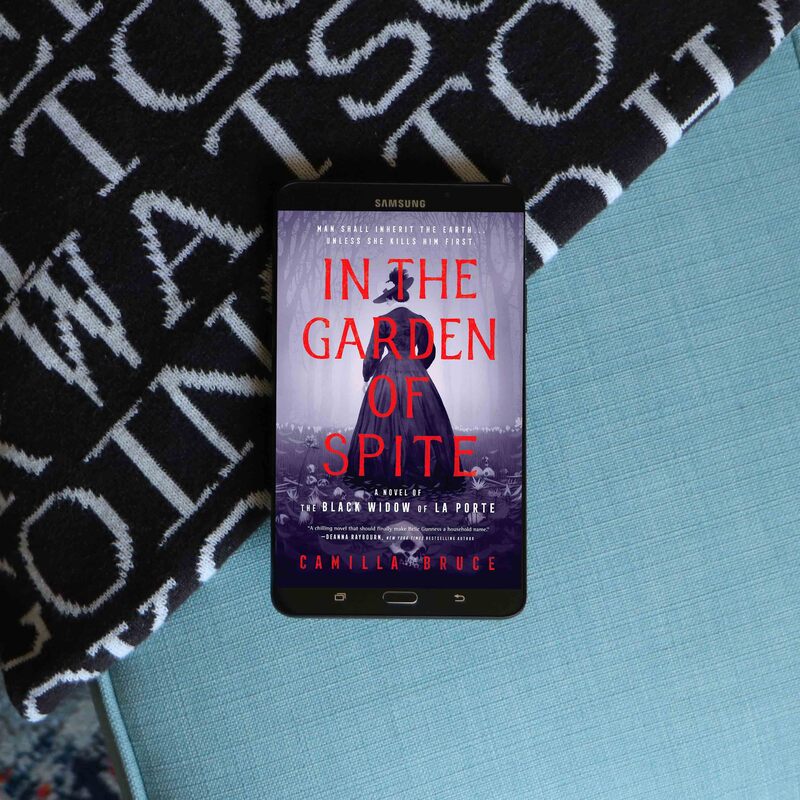|
4 stars
Two adult gay men reckon with being part of the community now that's out and proud and more accepted in modern culture—with vastly different results. With a sharp focus on the generation of cis white men who grew up with the fear and the secrecy and never expected to be thrust into the mainstream, this was an interesting and thought provoking read. Plot/Pacing: ★★★★ 1/2 Character development: ★★★★ Scope: This was focused on cis white gay men and their experiences Sebastian and Oscar grew up as friends. Both gay, cis, and white, they experienced several early moments together and were relatively close. But as adults, they drifted apart. In Let's Get Back to the Party, author Zak Salih invites us to tag along with Sebastian and Oscar as they go their separate ways in adulthood. While they started out with similar childhoods and share a gay cultural identity, the two have manifested those experiences very differently as adults. Sebastian looks at the modern world around him in awe. A teacher, he finds himself increasingly obsessed with one of his young male students. The student has been out and proud for years, has a boyfriend, and has enjoyed being a gay man in modern America. Grappling with his odd place as being too old for that type of generational freedom of expression, Sebastian watches it unfold in the younger generation and muses on the pasts and futures of the gay community. Oscar looks at the modern gay experience with more negative feelings. Seeing the assimilation of the community into the straight culture—and the number of gay men doing the "straight" thing and getting married and settling down—he sees the lifestyle that the community carved for themselves disappearing before his eyes. He becomes obsessed with the past, and fixates on a famous gay author's past works instead. A deep dive into the complicated intricacies of generational loss and growth, Let's Get Back to the Party is a read that is hard to forget. I really enjoyed the messy and complicated truths that the author presented for us in the archetypes of Sebastian and Oscar. While it's true that both of their experiences reflected the white, cis male gay experience and do not speak to the intersectionality at play in other conversations, this was still an intimate portrait of how modern times have fundamentally changed that community for better and for different. Really appreciated the read. Thank you to Algonquin Books for my copy in exchange for an honest review.
0 Comments
4 stars
A brutal slice of life into the world of Rafael's rodere—I really enjoyed this entry into the series. Given the usual length of Anita Blake books, this was basically a novella! But a very important one with the seeds of bigger plots to come... Plot/Pacing: ★★★★ 1/2 Character development: ★★★★ New ideas: ★★★★ Enjoyment: ★★★★ Let's get a housekeeping note out of the way. Yes, I love this series. Yes, I know that they are not everyone's cup of tea. I'm also aware that they tend to be a bit long-winded, overly invested in the relationship drama, and sometimes get tediously caught up in dialogue. That's just part of what this series is about - and I, for one, have loved them for years. So please note my deep affection for this series and take that into account for my reviews. Rafael is latest entry into the world of Anita Blake, a version of the U.S. where vampires, were-animals, and the undead all exist in our modern society with interesting—and often bloody—results. This is not an entry point novel for the series. In this latest installment, we finally(!) get a window in the world of the rat king, Rafael. The wererats have been a powerful were-animal faction in St. Louis for some time in the Anita Blake novels and are known for their fighting ability, their pack's strength, and the fact that their national king, Rafael, has been an ally to Anita Blake for years. It's time to peel back the curtain on what goes on in the kingdom... Rafael is in trouble. His ties to Anita—and therefore his perceived ties to Jean Claude and the other weres in Anita's sphere--have made him appear weak to the rest of the wererats across the country. They think it's time for a new king. And the way the rats determine their ruler is by blood. Specifically, a fight to the death. So Rafael's been fighting in the pits now, defending his crown and title, for some time. The only way to become the new rat king is to kill the old one... Anita Blake wasn't aware of just how bad Rafael's standing has gotten. When he asks her to attend this latest pit fight against the best challenger yet, Anita knows something must be different about this fight. For the first time, Rafael doesn't know if he's going to win. When Anita shows up, to her horror she realizes that a) there's someone familiar pulling the challenger's strings and b) her relationship to Rafael is about to get tested, and brutally. Can she fight her way to the top of the rat pile and assert her place while protecting Rafael from this latest deadly threat? We know she can, she's Anita Blake, but what exactly will she learn along the way? There's a different kind of magic amongst the rodere that they've kept hidden for some time... I thought this was one of the strongest entries into the Anita Blake series that we've seen in quite some time. Part of that was due to its subject—Rafael's world has never been fully described, so the newness was appealing to me—and the other part was its sheer short length. We didn't have time to get overly drawn into the relationship dramas (even though the characters did their best to do so anyway!) and therefore a lot of the usual "not this again!" feelings weren't present. I am also extremely intrigued at what the author alluded to with the addition of the wererats' magic systems... it bodes well for Anita Blake's character arc and opens the door for more books to come featuring this new thing. Don't skip this one in the series, folks! It's a good one and not the usual spin-off fare. Thank you to Berkley for my copy in exchange for an honest review. 4 stars
Camilla Bruce is now on my list of must-read authors. Her interest in the darker elements of the female experience—and in this case, the sociopathic murderous elements—makes for fascinating reading. This was a great work. But it could have been shorter. Concept: ★★★★★ Character portrayals: ★★★★★ Pacing/Length: ★★★ Have you heard the story of the Widow of La Porte? Belle Gunness' reign as one of the most prolific female series killers in early 1900s America is a chilling (and true) tale. Belle Gunness was born Brynhild Storset in Norway in the 1800s to a poor family of rural tenants. Her earliest years are spent with vicious nurture and violent nature, and an early sexual encounter gone extremely sour—the author's editorializing at work with this fact, as this encounter is rumored in Norway but not officially confirmed--leads to her first murder. Little Brynhild poisons her abuser and likes the feeling of power she gets. Little Byrnhild doesn't do well in Norway. The villagers whisper about her and her pride chafes at the knowledge that everyone in her small town knows of her shame. She writes to her older sister, Nellie, in America and desperately asks for her to help her. Nellie agrees to fund Brynhild's voyage to America and takes her under her wing in a Norwegian-American apartment community in Chicago. Brynhild becomes Bella. Bella's pride, greed, and need for control over the men in her life lead to some dark decisions... and her sister Nellie begins to suspect that something is not all right with her sister. As the years go by, Bella's life seems to be marked by obvious tragedy. Her husbands and children just keep...dying. And her homes and businesses just keep... burning down. What's up with that? Eventually, Bella moves to rural Indiana and marries Peter Gunness, her new persona as Belle Gunness begins. And once Peter suffers a tragic accident with a meat grinder—or cleaver, depending on who you ask—what's a twice-made widow to do with a huge farm but create an ad asking for male farm hands to come and help her? It's not exactly her fault if all the men disappear in the night... The black widow spider creates her wicked web... Told in two points of view, one from Belle herself and one from her sister, Nellie, In the Garden of Spite takes us along for the ride as we silently witness Belle's entire life from girlhood to her bloody reign as Belle Gunness on her murder farm. It's a chilling tale meant to unsettle, and Camilla Bruce's mastery of ominous, distanced writing really sells the tension throughout this almost 500-page novel. But bringing up the length of this book brings up my only caveat—it was pretty long. In the marketing, the focus is entirely on Belle's time in La Porte as a murdering farm widow. This seems to be a bit misleading and definitely affected how I viewed the pacing of the book. When you start a book expecting to read a novelization of the Widow of La Porte....and then it takes 380 pages to get to Belle's life as "Belle Gunness" in the first place... Honestly, it made the first 3/4 of the novel feel incredibly slow. I kept waiting for the "real" plot to happen and that took away from the experience of reading the characters' life stories. I'd definitely recommend going into this knowing that you're getting a life's story and not a snapshot novelization or a glorified true crime fixation. This is a personal and chilling character study of one woman's descent into the darkest levels of the human psyche and her lack of acceptance of her own darkness. It's also about the toll that life on her loved ones, and the knife's edge between loving and protecting your family versus realizing the monster in your family tree. Definitely read the author's note at the end - it gives a lot of context for Belle's real life, the amount of research the author used, and a key list of artistic differences that the author decided to take on in order to explore the themes. Thank you to Berkley, Goodreads, and NetGalley for my giveaway ARC of this title in exchange for an honest review. |
Amy Imogene ReadsJust someone looking for her own door into Wonderland. Categories
All
Archives
July 2024
|




 RSS Feed
RSS Feed
